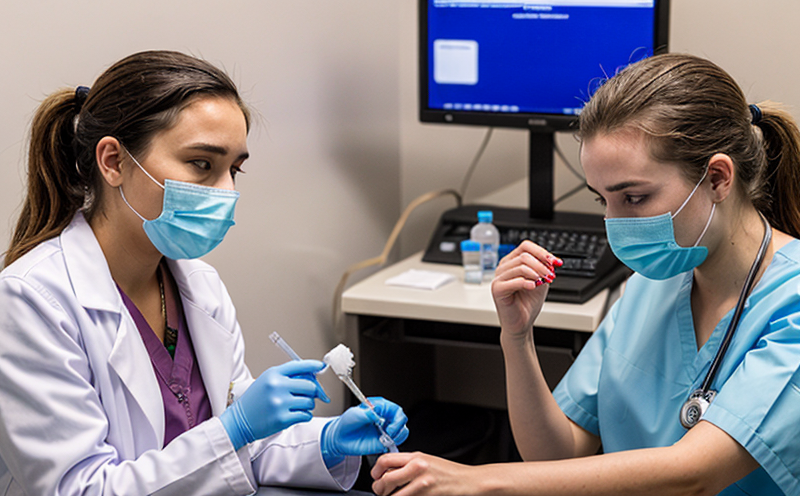ISO 11133 Culture Media Quality Testing for Clinical Microbiology
The ISO 11133 standard is a cornerstone in the quality assurance of culture media used in clinical microbiology laboratories. This service ensures that all culture media meet stringent requirements to support accurate and reliable microbial identification, differentiation, and antimicrobial susceptibility testing (AST). The primary goal is to provide culture media that are consistent in their performance across different laboratory conditions.
The standard covers various aspects of quality control, including the chemical composition, physical characteristics, and biobehavioral properties of culture media. It also includes guidelines for the preparation, storage, handling, and disposal of these media to ensure safety and efficacy.
Compliance with ISO 11133 is crucial because it directly impacts patient safety by ensuring that only reliable and consistent culture media are used in critical diagnostic procedures. This service helps laboratories maintain high standards of quality control, which is essential for regulatory compliance and the trust placed in clinical microbiology results.
In this testing process, multiple parameters are evaluated to ensure the media meet specified criteria. These include:
- Chemical composition: Ensures that all components are accurately represented as per the manufacturer’s specifications.
- PH stability: Maintains a consistent pH level over time and across different storage conditions.
- Bacterial growth characteristics: Evaluates how well bacteria grow on the media, which is critical for accurate identification.
- Contamination levels: Ensures that there are no contaminants present in the media that could interfere with test results.
- Antimicrobial susceptibility testing performance: Validates that the media support reliable AST results.
The testing process involves rigorous sample preparation and analysis using various laboratory instruments. This includes microbiological incubators, spectrophotometers for measuring turbidity, and automated microbial identification systems to analyze bacterial growth patterns.
Once tested, the culture media are reported against ISO 11133 criteria, providing detailed insights into their performance. This report is essential for laboratories aiming to maintain high standards of quality control and ensure they meet regulatory requirements.
Applied Standards
The application of the ISO 11133 standard in culture media testing ensures that all media used in clinical microbiology are reliable, consistent, and safe. This service aligns with several international standards, including:
- ISO 11133:2018 - General requirements for the quality of culture media intended for use in microbiological testing.
- ASTM E2657-19 - Standard practice for preparation and storage of culture media used in clinical microbiology laboratories.
- EN ISO 11133:2018 - European standard equivalent to the international standard.
- IEC 60529 - Protection ratings for enclosures, which may apply if the media are used in a specific environmental context.
These standards provide comprehensive guidelines that ensure laboratories can select and use culture media confidently. Compliance with these standards helps maintain high-quality diagnostics and supports patient safety.
Benefits
The benefits of ISO 11133 Culture Media Quality Testing are numerous, particularly for laboratories that perform clinical microbiology testing. Here are some key advantages:
- Enhanced Patient Safety: Reliable culture media ensure accurate and consistent test results, reducing the risk of misdiagnosis or delayed treatment.
- Regulatory Compliance: Meeting ISO 11133 ensures that laboratories can meet regulatory requirements, thus avoiding potential fines or sanctions.
- Improved Diagnostic Accuracy: Consistent media performance leads to more accurate identification and differentiation of microorganisms.
- Cost-Effectiveness: By minimizing errors and retesting, compliant culture media help reduce overall costs for laboratories.
- Enhanced Laboratory Reputation: Compliance with international standards enhances the reputation of a laboratory, attracting trust from healthcare providers and patients alike.
In summary, ISO 11133 Culture Media Quality Testing is essential for maintaining high-quality diagnostics in clinical microbiology laboratories. It ensures that all media used are reliable, consistent, and safe, leading to better patient care and more accurate results.
Use Cases and Application Examples
| Use Case | Description |
|---|---|
| Clinical Diagnostics | Involves the identification of microorganisms causing infections. Reliable culture media are crucial for accurate identification. |
| Antimicrobial Susceptibility Testing (AST) | Assesses how well different antimicrobials can inhibit or kill a particular organism. Consistent media performance ensures reliable AST results. |
| Blood Culture Monitoring | Ensures that culture media are suitable for the growth of blood-borne pathogens, which is critical in identifying sepsis and other bloodstream infections. |
| Viral Isolation | Supports the isolation of viruses from clinical samples. Reliable media ensure successful viral replication for accurate identification. |
| Bacterial Colonization Monitoring | Used to monitor bacterial colonization in various body sites, such as skin or respiratory tract. Consistent media performance is essential for reliable results. |
| Fungal Culture | Involves the growth of fungi from clinical samples. Reliable culture media are crucial for accurate identification and differentiation of fungal species. |
| Microbial Contamination Control | Ensures that culture media do not contain contaminants that could interfere with test results or lead to false positives. |
The above use cases demonstrate the critical role that ISO 11133 Culture Media Quality Testing plays in ensuring reliable and consistent results across various clinical microbiology applications. By adhering to this standard, laboratories can ensure that their culture media meet stringent quality criteria, thereby supporting high-quality diagnostics.





